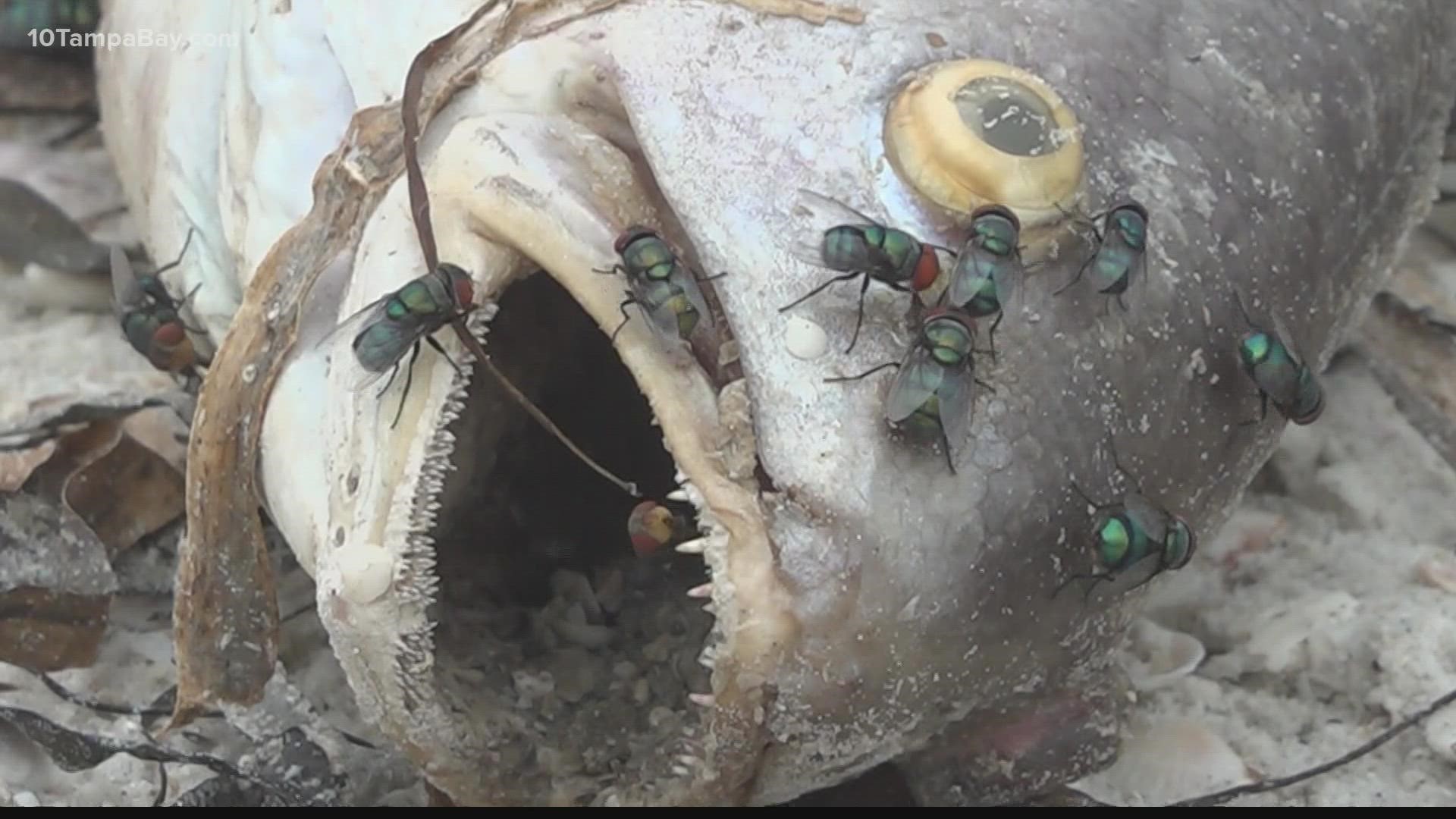ST. PETE BEACH, Fla. — Last week social media was “buzzing” with complaints from people noticing pesky flies in their back yards and swarming outdoor tables when they’re out to eat.
“The other day we started swatting around our faces and saying, ‘why are there so many flies here,’” recalls Janie Fielder who lives in Northeast St. Pete.
The reports of all the extra flies piqued the interest of researchers from the University of Florida and fly expert Dr. Edwin Burgess.
He and his team from Gainesville suited up Wednesday to investigate what’s going on with all the flies in Pinellas.
He says there’s little doubt all the dead sea life is adding to the fly problem. Now he wants to study the insects themselves to find out if they might be more than just a pesky nuisance.
“We are interested to see if any of that toxin that’s been killing these fish and aquatic sea life ends up in getting into the flies in some way as they’re feeding on them,” Burgess said.
It’s an important question to answer because flies can travel or even get blown far from the beach and the researchers want to know if the red tide toxins from the fish might somehow get transferred to other parts of the environment or even your dinner plate at an outdoor meal.
"When they land on food they can spread that into the food and that’s why we came out here." Burgess said. "We’re really not sure what to expect."
Burgess and his team worked to collect around 1,000 fly samples Wednesday. They were packed into a cooler on dry ice which puts the flies to sleep while also preserving any pathogens on their tiny little fly feet.
"We’re going to need to get this stuff back to our lab and from there will start asking questions," Burgess said. "That’s the beauty of research."
But what got these entomologists extra excited were all the baby fly larva found inside and underneath dead sea life on the beach.
That means the millions and millions of new flies will soon be maturing, highlighting the importance of getting the fish cleaned up quickly, something local communities across Pinellas are already working hard to do.
"It was very much worth the trip," Dr. Burgess said as he was leaving the beach. "We got all life stages of the flies so we’re very very excited about this."

